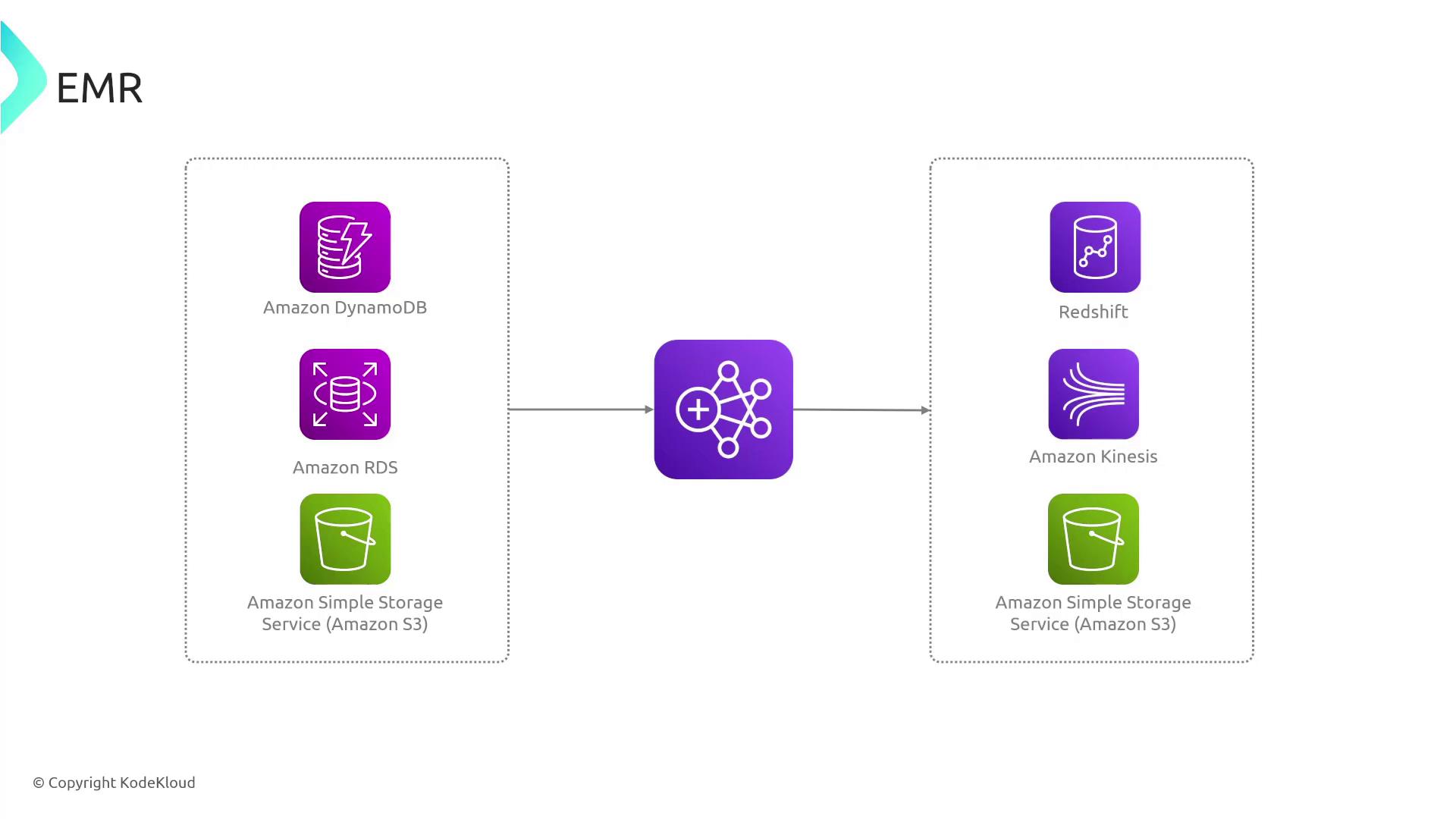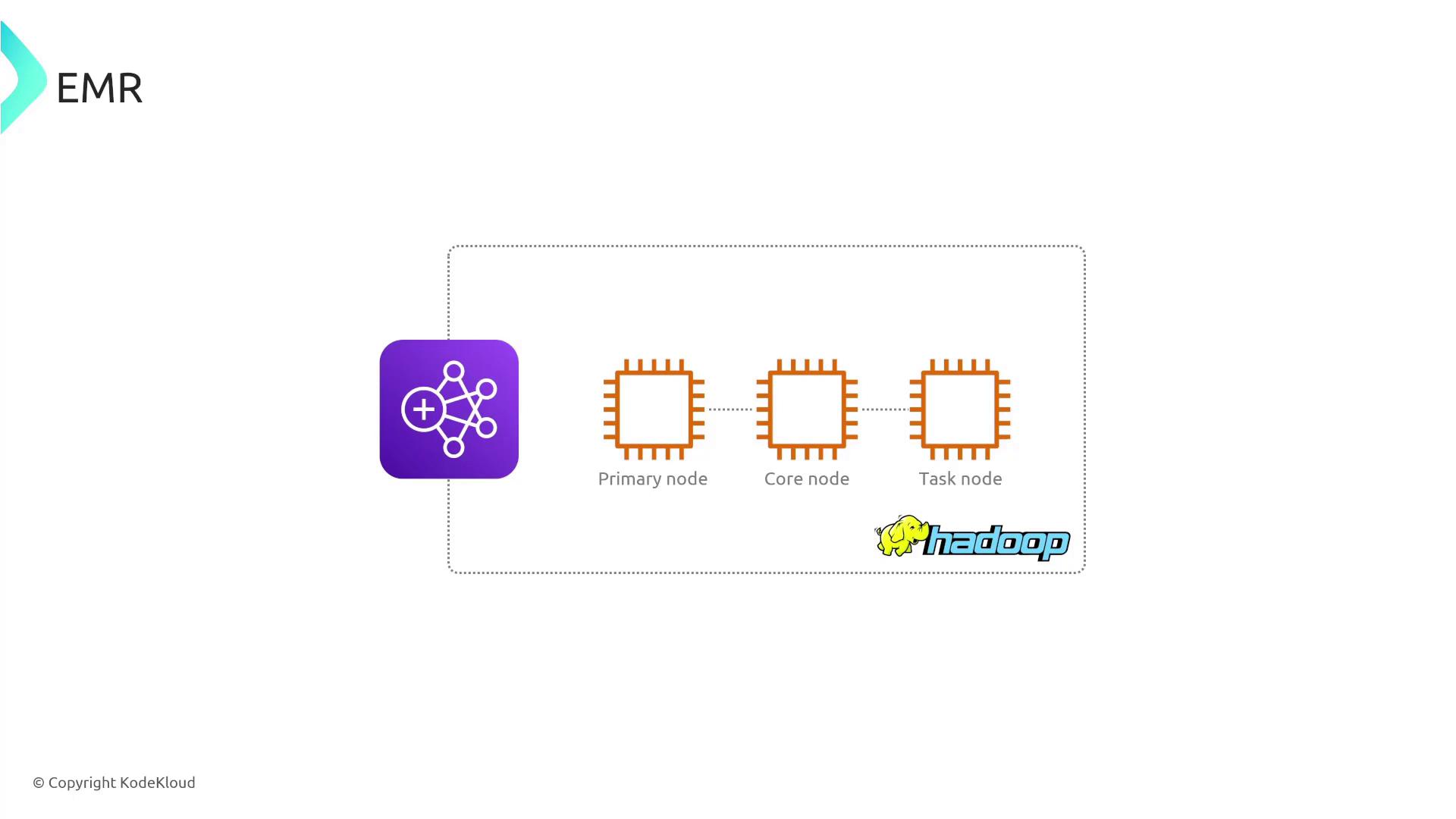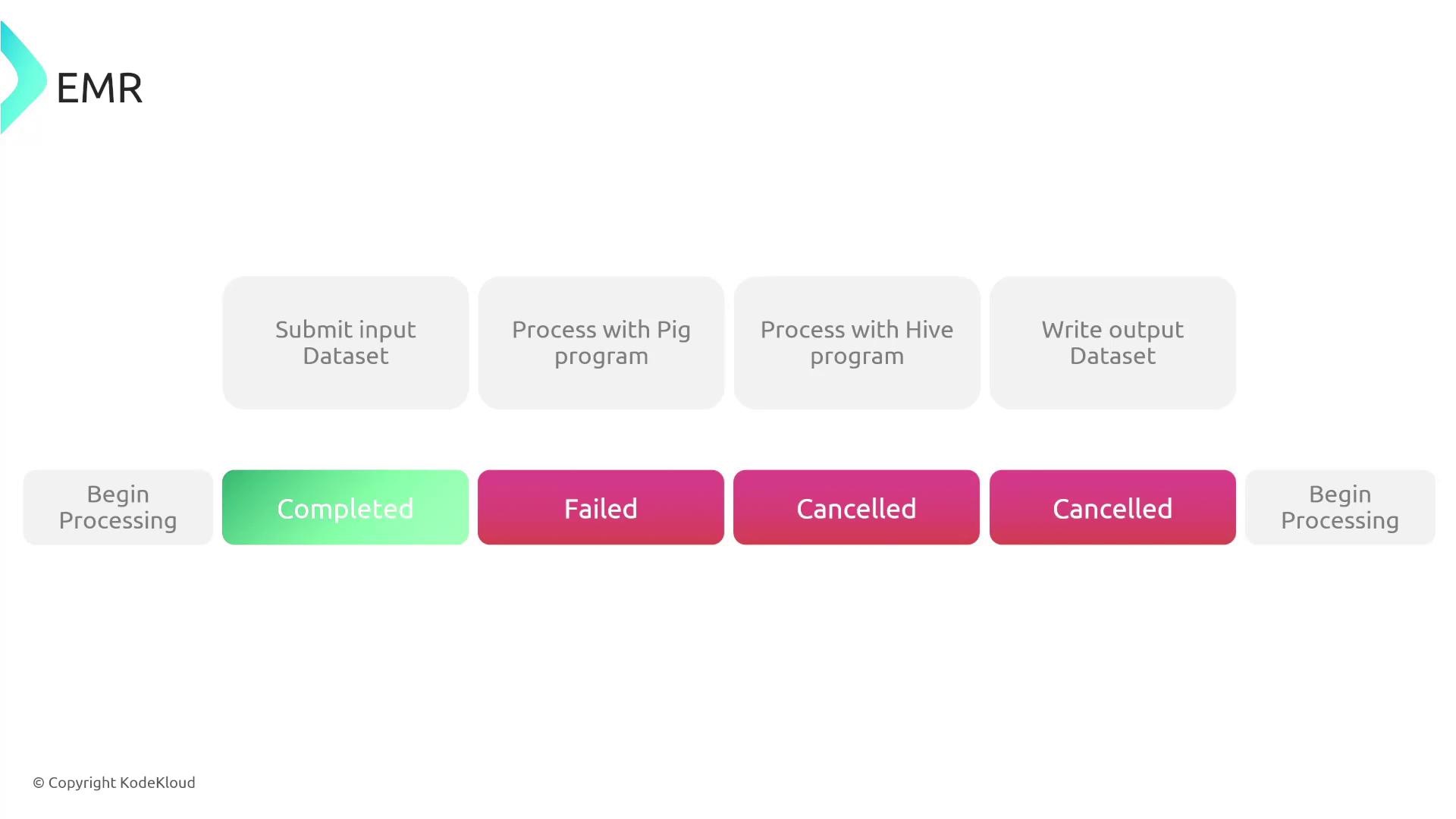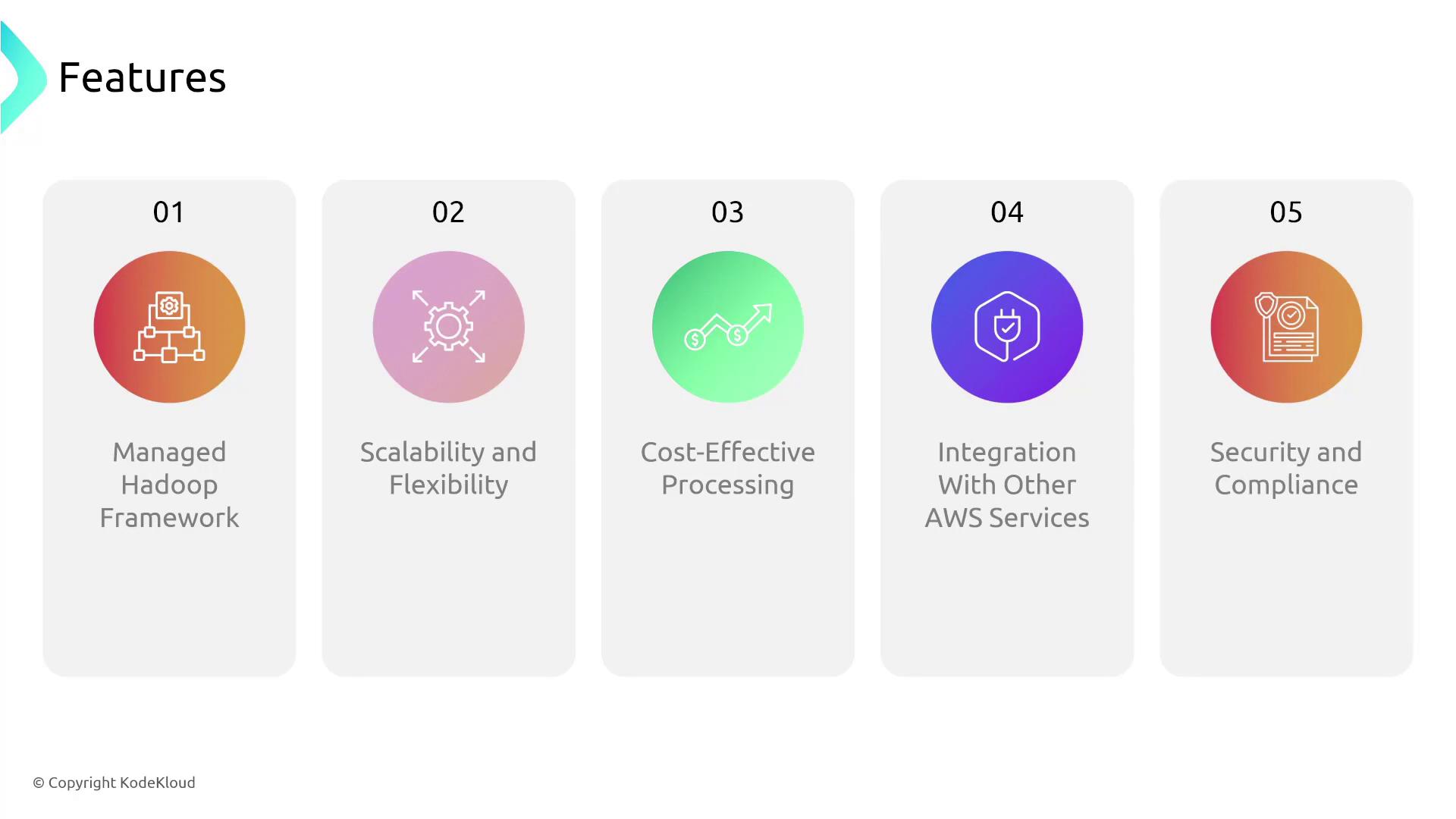AWS Solutions Architect Associate Certification
Services Data and ML
EMR
Hello future certified architects! In this lesson, we dive into Amazon Elastic MapReduce (EMR), a cornerstone service in AWS for big data processing. EMR provides a managed environment for running big data frameworks like Hadoop, Apache Spark, Hive, and Pig, enabling you to analyze massive datasets, drive business intelligence, and power machine learning workloads.
EMR commonly ingests data from repositories such as Amazon S3 into a managed cluster that processes data using open-source frameworks. This cluster, acting as a central processing unit, transforms and transfers data across AWS services like DynamoDB, RDS, and S3.
The diagram below illustrates a typical data flow in an EMR environment, where various data sources feed information into Apache Spark running on EMR, which then processes and outputs data to services such as Redshift, S3, or Kinesis.

EMR Cluster Architecture
At the heart of EMR lies its cluster—a set of Amazon EC2 instances known as nodes. Understanding the roles these nodes play is essential:
- Primary Node: Manages the overall cluster and orchestrates the distribution of data and tasks.
- Core Node: Hosts components that store data in the Hadoop Distributed File System (HDFS) and actively participate in data processing. In multi-node clusters, at least one core node is essential.
- Task Node: Exclusively handles data processing tasks without storing data. These nodes are optional and help scale the processing workload.
The diagram below provides a clear visualization of how these nodes interact within an EMR cluster.

How EMR Works
When launching an EMR cluster, you determine its size and specify node roles. Data is imported into the cluster from supported sources like S3 or DynamoDB. The primary node leverages frameworks such as Hadoop, Apache Spark, HBase, Presto, or Hive to distribute and process the data concurrently.
AWS provides tools like the CLI and EMR API, which allow you to monitor cluster performance and dynamically adjust the number of instances or manage the cluster lifecycle.
You can submit multiple processing steps to a running EMR cluster. For instance, a workflow might include running a Pig script on an input dataset, followed by a Hive program on a subsequent dataset, finally producing results. The step execution process works as follows:
- Initially, all steps appear in a “pending” state.
- The first step transitions to a “running” state while later steps remain pending.
- Completed steps update to “completed.”
- If a step fails (e.g., due to a Pig script error), its status changes to “failed,” and any pending steps are automatically canceled.
- Optionally, you may opt to ignore a failure to allow subsequent steps to run, or terminate the cluster immediately.
The flowchart below outlines this process along with step status indicators.

Key Features of Amazon EMR
Amazon EMR offers several standout features that make it a powerful solution for big data processing:
- Managed Hadoop Framework: Leverage native support for Hadoop alongside Spark, HBase, Presto, Hive, and more.
- Scalability and Flexibility: Easily scale clusters from a single instance to thousands, taking full advantage of AWS’s elastic infrastructure.
- Cost-Effective Processing: Optimize costs with EC2 spot pricing for task nodes, ideal for interruptible workloads.
- Seamless AWS Integration: Integrates effortlessly with services such as S3, RDS, DynamoDB, CloudWatch, and CloudFormation.
- Robust Security: Multiple security layers include IAM integration, customer-managed key support, encryption (at rest and in transit), and network isolation. EMR also complies with standards like GDPR and HIPAA.
The diagram below visually summarizes these key features.

Note
For detailed integration guidelines and best practices, refer to the Amazon EMR Documentation.
Conclusion
Amazon EMR simplifies and accelerates your big data processing needs, allowing you to efficiently transform and analyze vast datasets through a managed and scalable cluster. By integrating seamlessly with other AWS services and offering reliable performance, EMR is an invaluable tool for approaching data transformation and analytics at any scale.
Happy architecting, and may your journey with EMR be both insightful and productive!
Watch Video
Watch video content